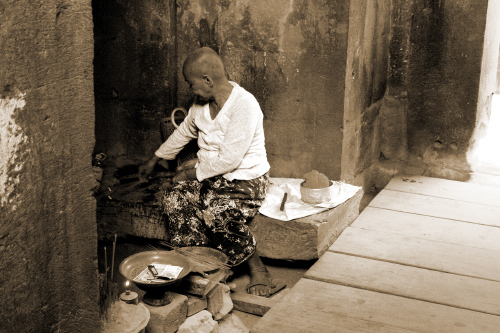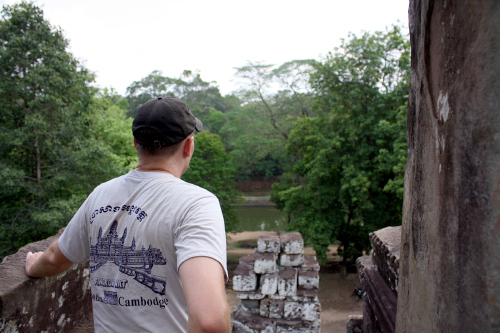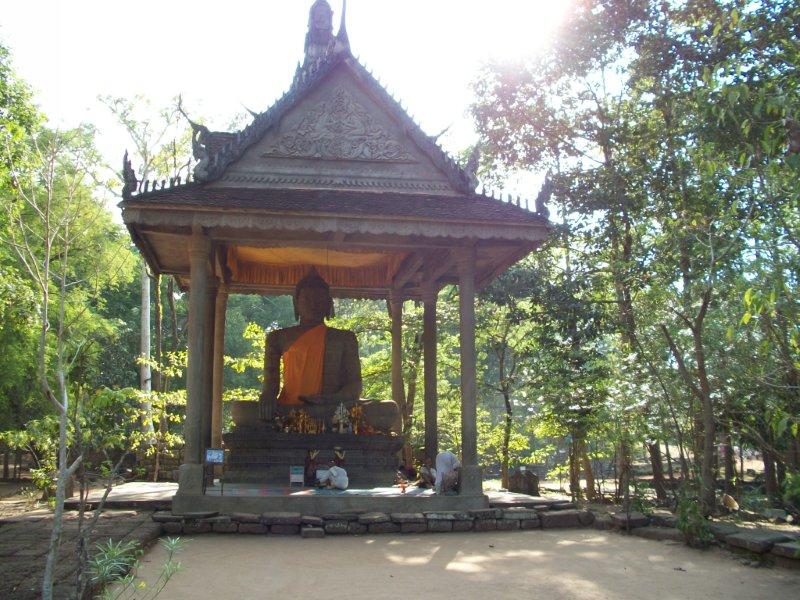
I am always fascinated when I see something here in person or read about it in a local newspaper that gives insight into the religious mindset of the people here. Here is another example from the Wednesday, May 19, 2010, Phnom Penh Post newspaper:
More than 15,000 people came out for an annual ceremony in Kandal province’s Ponhea Leu district during which attendees beseeched a spirit for rain, a local official said.
The two-day ceremony in Ponhea Pun commune concluded Tuesday.
Commune chief Kou Eoun said villagers prayed for rain as well as for “peace for beasts and domestic animals”.
He said comedians and musicians accompanied a procession of 200 villagers who made offerings to a holy spirit called Neak Ta Pring Kh’aek on Tuesday morning, and that thousands of people travelled from surrounding provinces Read more >>

 May 13th through May 15th was a national holiday to celebrate the Cambodian King’s Birthday. During the holiday, I had the chance to see Angkor along with
May 13th through May 15th was a national holiday to celebrate the Cambodian King’s Birthday. During the holiday, I had the chance to see Angkor along with The traditional practice of Theravada Buddhism, which is the majority religion in Cambodia, is to cremate the dead body. In an article on burial practices in Cambodia, Rosemary Shewry writes, “After death the body is kept in the home in a closed coffin for three days, on a block of ice and with copious tea leaves (frequently replaced) to freshen the atmosphere. Lucky paper is burnt at the foot of the coffin. The coffin is opened (so the spirit can listen) when monks visit to chant but the face remains covered with a white cloth. On the third day the body is removed to the temple (pagoda) for cremation, the body is exposed for a farewell look and the cloth covering the face is retained for good fortune. A white flag is displayed outside the house during this period and children of the deceased shave their heads and dress in white. Cremation is usually carried out in the temple and the ashes placed in an urn. The urn is placed in a stupa (also called achedi) in the pagoda grounds or within the pagoda itself” (
The traditional practice of Theravada Buddhism, which is the majority religion in Cambodia, is to cremate the dead body. In an article on burial practices in Cambodia, Rosemary Shewry writes, “After death the body is kept in the home in a closed coffin for three days, on a block of ice and with copious tea leaves (frequently replaced) to freshen the atmosphere. Lucky paper is burnt at the foot of the coffin. The coffin is opened (so the spirit can listen) when monks visit to chant but the face remains covered with a white cloth. On the third day the body is removed to the temple (pagoda) for cremation, the body is exposed for a farewell look and the cloth covering the face is retained for good fortune. A white flag is displayed outside the house during this period and children of the deceased shave their heads and dress in white. Cremation is usually carried out in the temple and the ashes placed in an urn. The urn is placed in a stupa (also called achedi) in the pagoda grounds or within the pagoda itself” (